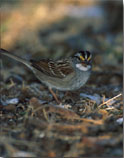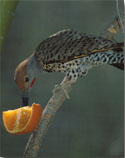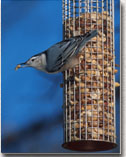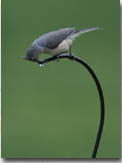| Suet is high in fat and a most crucial dietary element in winter, replacing precious energy lost by birds in cold weather. It remains a staple year round at our house. The Woodpeckers especially love suet. A family of five Downy Woodpeckers visits us everyday. Suet is available from several commercial sources, or you can make your own. Mix lard, yellow cornmeal, raisins, peanut butter and melt over a medium burner, then pour into a pan and let it set in a cool area until hard. Suet will attract a wide variety of birds anytime of year. Competition among species can be fierce, so we have two suet feeders placed about 30 feet apart. During snow or icy weather, don't forget the wrens and other ground feeding birds Check out my winter feeder here. Good luck with feeding the birds in your back yard! |
|
Home About this site My Links Photo Gallery Featured guest page




